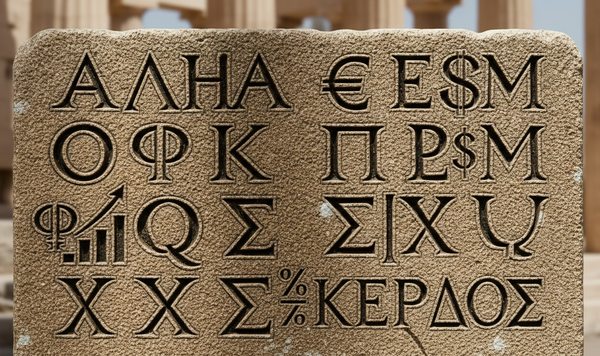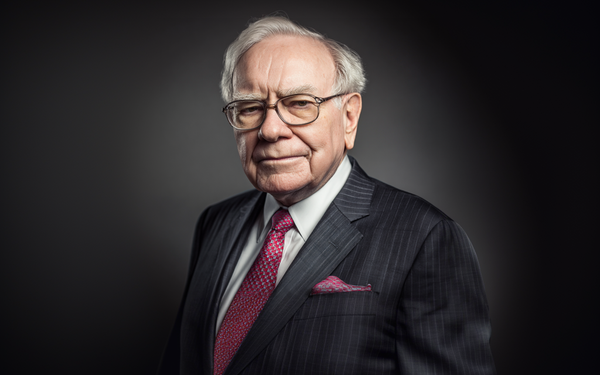How airlines extract $148 Billion through hidden charges
Tired of a $79 flight turning into $347? We expose the hidden fees, psychological tricks, and AI pricing airlines use. Learn to fight back and save money.

Picture this: You're scrolling through flight deals, feeling pretty savvy about that $79 ticket to Miami. You pat yourself on the back, maybe even brag to your friends about your bargain-hunting skills.
Then reality hits at checkout. Suddenly that "steal" becomes $347. Ouch.
That $79 base fare? It represented only 6% of your total flight costs in 2024. The other 94%? Welcome to the airline industry's greatest magic trick - making money disappear from your wallet faster than a David Copperfield show.
If you've ever felt like airlines are playing some elaborate shell game with your money, you're absolutely right. And today, we're pulling back the curtain on the biggest financial hustle in the travel industry. Ready to become a smarter traveler and save hundreds on your next flight? Let's dive in!
How airlines generate $148 Billion in hidden revenue: the ancillary fee revolution
Remember when buying a plane ticket was simple? You paid one price, got a seat, checked a bag, maybe got a stale sandwich. Those days are deader than MySpace.
The 2008 financial crisis was the catalyst that changed everything. When airlines faced collective losses of $26 billion and oil prices soared to $147 per barrel, carriers desperately needed new revenue streams. What started as emergency measures became permanent business strategy. Airlines discovered they could advertise lower base fares to compete with budget carriers while secretly making up the difference through fees.
Airlines have pulled off what might be the most successful business model transformation in modern history. Global ancillary revenue hit $148.4 billion in 2024 - that's a 26% increase from last year alone.

The transformation has been dramatic: Global ancillary revenue grew from $42.6 billion in 2013 to $117.9 billion in 2023 - nearly tripling in a decade. This represents growth from roughly 7% of total airline revenue in 2014 to 15% in 2024.
Ultra-low-cost carriers (ULCCs) have gone full ancillary: These airlines now derive over 50% of their total revenue from add-on fees. They've essentially flipped the traditional airline model - the "transportation" is the loss leader, and everything else is where they make money.

Why Ultra-Low-Cost Airlines have 16% profit margins while legacy carriers struggle
Ultra-low-cost carriers are crushing it with 16% profit margins while the industry average sits at a measly 3.1%. How? Their secret isn't just flying planes - it's mastering high-margin upselling.
While airlines might make 5-10% profit on your actual ticket (after paying for fuel, crew, aircraft costs), ancillary fees have profit margins of 80-90%. That $35 baggage fee? It costs the airline basically nothing extra to handle your bag, so nearly all of it goes straight to their bottom line.
Credit card partnerships are pure gold mines. Banks pay major carriers billion per year in partnership deals. When Delta gives you "free" baggage with their credit card, they're not losing money - they're getting paid handsomely by American Express for the privilege.
Airlines also dodge taxes through unbundling. The 7.5% federal excise tax applies only to base fares, not to baggage or seat fees. A RAND Corporation study estimated that untaxed fees cost the Airport & Airway Trust Fund about 4-4.6% of its revenue. So while you lose tax benefits, airlines save on tax payments. Double win for them, double loss for you.
The fuel hedging game: why your $35 baggage fee underwrites billion-dollar oil bets
Want to understand the real reason airlines became obsessed with ancillary fees? It's not just greed (though that's definitely part of it). The single largest and most terrifying cost for any airline is jet fuel - and it's about as predictable as cryptocurrency prices after Elon Musk tweets.

Here's the nightmare scenario that keeps airline CFOs awake at night: Fuel costs represent 20-30% of an airline's total operating expenses, and oil prices can swing wildly based on everything from Middle Eastern politics to pipeline accidents to global economic uncertainty. Airlines like Southwest saved over $4 billion through fuel hedging between 1999 and 2008, demonstrating both the massive potential gains and risks involved.
Airlines use complex financial derivatives like futures contracts and options to essentially place massive bets on future fuel prices, sometimes locking in costs months or years in advance. EasyJet hedged 76% of its fuel requirements for H1 2024 at $109.75 per barrel, while Air France-KLM hedged around 70% of its consumption for Q4 2023 at $129.87 per barrel.
Singapore Airlines recorded profits of $970.3 million through hedging between FY2022/23 and FY2023/24, effectively offsetting rising fuel expenses. When airlines guess right, they can save billions and undercut competitors. When they guess wrong? Financial catastrophe.
This is where your baggage fees enter the picture. That $35 you pay for your checked bag isn't just profit - it's insurance against the airline's massive fuel gambling operation. Ancillary fees generate stable, predictable, extremely high-margin revenue (80-90% profit margins) that acts as a crucial financial buffer against fuel price volatility.
How airlines monetize your environmental guilt
Get ready for the next wave of airline fee creativity: environmental charges that make baggage fees look quaint. Airlines have discovered they can charge you extra to feel good about destroying the planet, and it's about to become a massive revenue stream disguised as corporate responsibility.
Lufthansa introduced a compulsory "environmental cost surcharge" on flights from the EU, UK, Norway, and Switzerland starting in 2025, ranging from €1 to €72 depending on the flight. This surcharge aims to cover costs from EU requirements that aviation fuel must contain at least 2% Sustainable Aviation Fuel (SAF) starting in 2025.
The global airline industry faces a $5 trillion cost for decarbonizing air travel, and airlines are systematically passing these costs to passengers. Singapore's government announced taxes on air fares to fund purchases of sustainable aviation fuel, while Malaysia authorized carriers to charge carbon levies.
Why the same airline charges you differently based on geography
Ever notice how a Delta flight from Atlanta costs more in fees than the same Delta flight from Detroit? Your departure city determines your fee pain level more than almost any other factor, and airlines use sophisticated geographic pricing that would make a casino jealous.
Monopoly routes are fee paradise for airlines. When only one or two carriers serve a route, they can charge whatever they want for extras. At 40 of the 100 largest U.S. airports, a single airline controlled a majority of the market as of 2015, up from 34 airports a decade earlier. Airlines call this "route profitability optimization," but it's really just "we've got you trapped" pricing.
Hub captivity creates the ultimate fee trap. Research shows that Delta and United flights are about $10 more expensive when using their hub airports, with hub premiums driven by airport dominance.
Academic research confirms the hub premium effect: studies show that airport dominance is a more important source of market power than route dominance, with airlines extracting higher fares through their hub positions.
How airlines triple-charge you during peak times
Think airline fees are bad during regular travel? Airlines employ sophisticated seasonal pricing that multiplies fees during peak demand periods.
Research shows that winter flights to destinations like Cabo San Lucas can see average ticket prices surge by 50-75% compared to summer months, with airlines using AI-powered algorithms that can change ticket prices up to 20 times per day during peak holiday periods.
Fun fact: The five major US airlines generated $12.4 billion from seat selection fees alone between 2018-2023.
Holiday fee escalation is systematic. Airlines don't just raise base fares during Thanksgiving and Christmas - they multiply ancillary fees too. Airlines use machine learning algorithms to predict demand and adjust prices up to 365 days in advance, with some models analyzing over 100 variables to set peak pricing.
The hidden infrastructure tax you always pay
Airports generate revenue through diverse streams that all flow to passenger costs: Landing fees account for approximately 20-30% of an airport's total revenue, while commercial activities can generate up to 50% of total revenue at some airports.

Passenger Facility Charges (PFCs) are the most visible infrastructure tax. U.S. airports collected $3.514 billion in PFCs in 2018, with fees capped at $4.50 per enplaned passenger. These fees fund FAA-approved projects that "enhance safety, security, or capacity; reduce noise; or increase air carrier competition."
Landing fees, gate rental, and ground handling costs create a complex web of charges that airlines pass through to passengers. Airlines pay landing fees based on aircraft weight, terminal rental rates, passenger service charges, and security charges - all of which get distributed across passenger tickets.
How airlines turned miles into money-printing machines
While passengers obsess over earning miles, airlines pulled off one of the most brilliant financial engineering moves in modern business history. Frequent flyer programs aren't loyalty programs - they're private banks that happen to have airplanes.
American's AAdvantage program is valued at $18-30 billion, while United's MileagePlus hits $22 billion - more than many entire airlines are worth. During the pandemic, United used its MileagePlus program as collateral to raise $6.8 billion in financing.
The cash flow magic is beautiful (for airlines): Airlines sell miles to partners at around 2-3 cents per mile, while the cost to create a mile is typically less than 0.5 cents.
Credit card partnerships are the real goldmine: Delta received $6.8 billion in revenue from American Express in 2023, while United's Chase partnership generated $2 billion in 2019. The profit margins on sales of points and miles are significantly higher than on core travel business, with some estimates showing 34-40% EBITDA margins for loyalty programs.
How airlines trick you into paying 3x more
Airlines have perfected what regulators call "drip pricing" - showing you a low price up front, then slowly dripping additional fees throughout the booking process like a leaky financial faucet.
The classic airline bait-and-switch goes like this:
- Google Flights shows "$79 to Miami"
- Click through and it's "$79 + taxes = $127"
- Add bags and it becomes "$127 + $35 = $162"
- Pick a seat and you're at "$162 + $25 = $187"
- Want insurance? "$187 + $18 = $205"
- Processing fee: "$205 + $12 = $217"
By the time you realize you're paying nearly 3x the advertised price, you've already invested mental energy in the booking. Airlines know you're less likely to abandon cart at step 6 than step 1.
The psychology behind airline fee manipulation: 4 tricks they use
Airlines rely on a few psychological tricks to trick you in spending more.
1. The partitioned pricing trick
Instead of one $200 ticket, they show you "$79 base + $35 bag + $25 seat + $61 taxes." Research shows your brain fixates on that $79 "anchor" and downplays the add-ons. It's like a restaurant charging $5 for a burger, then $3 for the bun, $4 for cheese, and $8 for cooking - but somehow less delicious.
2. The anchoring trick
Ever notice how airline websites show you the most expensive seat upgrade first? That $319 premium seat makes the $89 "preferred" seat seem reasonable. Classic anchoring bias - they're literally rewiring how you perceive value.
3. The decoy effect
Airlines love serving you three options:
- Basic Economy: $79 (but you can't bring a bag, choose a seat, or probably breathe)
- Standard: $189 (seems reasonable now, right?)
- Premium: $299 (the "I have money to burn" option)
Guess which one most people choose? Yep, the middle one.
4. The scarcity panic button
"Only 3 seats left at this price!" Sound familiar? This creates artificial urgency that bypasses your rational brain and goes straight to your panic center. It's the same psychological trick used by flash sale websites, except with more altitude.
Next time you see this message, open an incognito window and check the same flight. Magically, there are often still "3 seats left." Funny how that works.
How airlines use AI to maximize your bill
Spirit and Frontier pioneered the algorithmic fee revolution using Navitaire Dynamic Pricing (a Sabre subsidiary) to set baggage and seat fees in real-time. In 2023, Spirit's first-bag fee ranged from $10 to a whopping $89, while Frontier's swung from $0 to $138 depending on demand.
These systems analyze:
- Your browsing history (cleared cookies won't save you)
- Your location (flying from Manhattan? That'll cost extra)
- Time of booking (desperate Sunday night bookers pay premium)
- Device type (Mac users apparently have deeper pockets)
- Previous purchases (bought business class once? You're marked)
How airlines segment customers to extract maximum revenue
Airlines have divided us into categories like we're characters in a dystopian novel:
The business warriors (50% of revenue, 20% of passengers)
These folks expense everything, so airlines hit them with premium pricing for flexibility and convenience. Corporate cards make people surprisingly comfortable with $200 change fees.
The vacation hunters (30% of revenue, price-sensitive AF)
These are the deal-seekers scrolling through Scott's Cheap Flights at 2 AM. Airlines squeeze them through volume and creative fee structures. Plot twist: Budget travelers actually pay the most in ancillary fees because they book the cheapest base fares then get nickel-and-dimed for everything else.
The loyalty addicts (High Value, emotionally attached)
Status members who'd rather eat ramen for a month than fly a different airline. Airlines treat them like VIPs while extracting maximum lifetime value. The secret: Elite members get "free" bags and seat selection, but airlines recover those costs through credit card partnerships and higher base fares.
New airline fee regulations: what changed in 2024
In 2024, the Department of Transportation introduced significant new airline fee regulations that require airlines to disclose baggage fees upfront, provide automatic refunds for cancelled flights, and implement family seating requirements without extra charges, with compliance deadlines of October 2025 for airlines and October 2026 for travel agents. The DOT estimates these changes will save consumers $543 million annually from prevented surprise fees plus another $484 million in time saved, while also cracking down on deceptive advertising practices like percentage discounts that only applied to base fares rather than full ticket prices. However, the regulations only cover "critical" fees, leaving airlines free to continue surprise billing for WiFi, food, priority boarding, and seat selection, and the US approach remains far less comprehensive than European regulations that require all-inclusive pricing and provide up to €600 in delay compensation, or Canada's more robust passenger protection rules. While the DOT has dramatically increased enforcement penalties to $225 million from 2021-2024 compared to just $71 million from 1996-2020, the system still relies primarily on complaint-driven rather than proactive monitoring, representing meaningful but limited progress in airline fee transparency.
The future of airline pricing: what to expect
AI pricing will get scarier. Airlines are investing billions in systems that can predict exactly how much you're willing to pay based on your digital footprint. It's personalized pricing on steroids.
Regulation will slowly catch up. European-style transparency requirements are coming to the US, but airlines will find new creative ways to extract fees. It's an eternal game of cat and mouse.
New players will disrupt the game. Electric aircraft, hyperloop technology, and new business models could shake up the industry. But don't hold your breath - airlines have mastered the art of monetizing disruption.
Conclusions
The airline industry has successfully transformed from transportation to entertainment - and not the good kind. They've turned buying a plane ticket into a psychological obstacle course designed to extract maximum revenue from every passenger.
But here's the thing: Knowledge is power. Understanding their playbook means you can play defense. You can't completely avoid airline fees (unless you never fly), but you can minimize them and avoid surprises.
The smart money strategy:
- Budget based on total trip cost, not base fares
- Use airline credit cards strategically
- Know your passenger rights
- Book direct when possible
- Don't let emotional manipulation drive your decisions
The airlines spent billions figuring out how to optimize revenue from your travel budget. Now it's your turn to optimize back. The house always has an edge, but that doesn't mean you can't play smart.
Safe travels, and may your carry-on always fit in the overhead bin! ✈️





